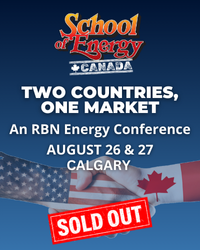The pace of multibillion-dollar acquisitions in the upstream sector may have eased a bit after a frenetic couple of years, but M&A among E&Ps is still happening. And, just as important, producers just coming off big deals are divesting assets that don’t fit their strategies, or reaching agreements to buy “bolt-on” acreage and production in key basins. There’s a lot of M&A “fun, fun, fun” going on, though many of the deals don’t make big headlines because there are only nine or 10 numbers after the dollar sign, not 11. In today’s RBN blog, we look at a variety of recent upstream M&A and divestment announcements and what they tell us about the production end of U.S. energy markets.
As we said a couple of months ago in Money Can Buy It, there was a record $120 billion in upstream M&A in 2024, and that was on the heels of three very active years in 2021, 2022 and 2023. The biggest deals last year were gargantuan, with the biggest being Diamondback Energy’s $26 billion acquisition of Endeavor Energy Resources, ConocoPhillips’s buyout $22.5 billion purchase of Marathon Oil, and Chesapeake Energy’s $11.5 billion purchase of Southwestern Energy (to form a natural-gas-focused giant now known as Expand Energy).
The biggest upstream deals so far this year have been considerably smaller. The stand-out is EOG Resources’ May 30 agreement with the Canada Pension Plan Investment Board (CCPIB) and Encino Energy to acquire their jointly owned Encino Acquisition Partners (EAP) — the #1 condensate producer in eastern Ohio’s Utica Shale — for $5.6 billion, inclusive of EAP’s debt. We explained in Might As Well Jump! a few days ago, that EOG sees the deal as transformative for the company in that it gives it a “third foundational play,” the others being the Permian’s Delaware Basin and the Eagle Ford.
Today, we begin a review of several other 2025 upstream deals, some involving the purchase of entire companies and other the acquisition of specific groups of E&P assets. Together, these transactions suggest that while major oil and gas producers are still digesting the companies they gobbled up in 2022-24, they also are bolting on complementary assets and divesting what’s not core to their strategies — all while making sure not to run up their debt.
Join Backstage Pass to Read Full Article







